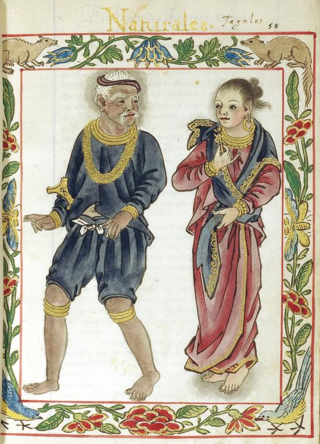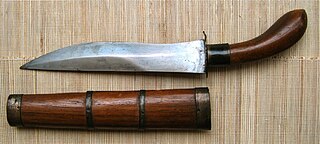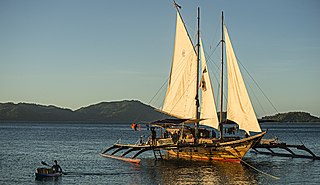
In the indigenous religion of the ancient Tagalogs, Bathala/Maykapal was the transcendent Supreme Being, the originator and ruler of the universe. He is commonly known and referred to in the modern era as Bathala, a term or title which, in earlier times, also applied to lesser beings such as personal tutelary spirits, omen birds, comets, and other heavenly bodies which the early Tagalog people believed predicted events. It was after the arrival of the Spanish missionaries in the Philippines in the 16th century that Bathala /Maykapal came to be identified with the Christian God, hence its synonymy with Diyos. Over the course of the 19th century, the term Bathala was totally replaced by Panginoon (Lord) and Diyos (God). It was no longer used until it was popularized again by Filipinos who learned from chronicles that the Tagalogs' indigenous God was called Bathala.

Datu is a title which denotes the rulers of numerous indigenous peoples throughout the Philippine archipelago. The title is still used today, though not as much as early Philippine history. It is a cognate of ratu in several other Austronesian languages.

Filipinos are citizens or people identified with the country of the Philippines. The majority of Filipinos today come from various Austronesian peoples, all typically speaking Filipino, English or other Philippine languages. Currently, there are more than 185 ethnolinguistic groups in the Philippines each with its own language, identity, culture, and history.

The Tagalog people are the largest ethnolinguistic group in the Philippines, numbering at around 30 million. An Austronesian people, the Tagalog are native to the Metro Manila and Calabarzon regions of southern Luzon, and comprise the majority in the provinces of Bulacan, Bataan, Nueva Ecija and Aurora in Central Luzon and in the islands of Marinduque and Mindoro in Mimaropa.

The Sambal people are a Filipino ethnolinguistic group living primarily in the province of Zambales and the Pangasinense municipalities of Bolinao and Anda. The term may also refer to the general inhabitants of Zambales. They were also referred to as the Zambales during the Spanish colonial era.

Salakót is a traditional lightweight headgear from the Philippines that is commonly used during pre-colonial era up to the present day, used for protection against the sun and rain. Every ethnolinguistic group in the archipelago has their own variant, but they are all usually dome-shaped or cone-shaped and can range in size from having very wide brims to being almost helmet-like. They are made from various materials including bamboo, rattan, nito ferns, and bottle gourd. The tip of the crown commonly has a spiked or knobbed finial made of metal or wood. It is held in place by an inner headband and a chinstrap. The salakot hat also influenced the pith helmet used by European colonizers. Salakot or also spelled as salacot in Spanish and salacco in French is the direct precursor to the pith helmet widely used by European military forces in the colonial era.

Antonio de Morga Sánchez Garay was a Spanish soldier, lawyer and a high-ranking colonial official for 43 years, in the Philippines, New Spain and Peru, where he was president of the Real Audiencia for 20 years.

Bagani or magani refers to the class of warrior-leaders of various Lumad ethnic groups of the island of Mindanao, Philippines. Bagani were most notably integral to the traditional society and government of the Mandaya, Mansaka, Manobo, and Bagobo people. They usually acquired their status through bravery in battle, fortitude, physical strength, and most importantly, natural charisma and leadership skills. Various bagani of the past have become mythologized as heroes in their communities.
The Boxer Codex is a late-16th-century Spanish manuscript produced in the Philippines. It contains 75 colored illustrations of the peoples of China, the Philippines, Java, the Moluccas, the Ladrones, and Siam. About 270 pages of Spanish text describe these places, their inhabitants and customs. An additional 88 smaller drawings show mythological deities and demons, and both real and mythological birds and animals copied from popular Chinese texts and books in circulation at the time.

The alipin refers to the lowest social class among the various cultures of the Philippines before the arrival of the Spanish in the 16th and 17th centuries. In the Visayan languages, the equivalent social classes were known as the oripun, uripon, or ulipon.

The gunong is a knife from Mindanao and the Visayas islands of the Philippines. In ancient past, it was called bunong by the Tagalog people. It is essentially a diminutive form of the larger kalis or kris. The gunong serves both as a utility knife and as a thrusting weapon used for close quarter fighting—usually as a last defense. It is most often associated with the Maranao, among whom the gunong was traditionally carried by both sexes, although it exists in other cultures throughout Mindanao and the Visayas. The weapon is generally tucked into the back of a waist sash.

The cultural achievements of pre-colonial Philippines include those covered by the prehistory and the early history (900–1521) of the Philippine archipelago's inhabitants, the pre-colonial forebears of today's Filipino people. Among the cultural achievements of the native people's belief systems, and culture in general, that are notable in many ethnic societies, range from agriculture, societal and environmental concepts, spiritual beliefs, up to advances in technology, science, and the arts.

The known recorded history of the Philippines between 900 and 1565 begins with the creation of the Laguna Copperplate Inscription in 900 and ends with the beginning of Spanish colonization in 1565. The inscription records its date of creation in the year 822 of the Hindu Saka calendar, corresponding to 900 AD in the Gregorian calendar. Therefore, the recovery of this document marks the end of the prehistory of the Philippines at 900 AD. During this historical time period, the Philippine archipelago was home to numerous kingdoms and sultanates and was a part of the theorized Indosphere and Sinosphere.

In early Philippine history, barangay is the term historically used by scholars to describe the complex sociopolitical units which were the dominant organizational pattern among the various peoples of the Philippine archipelago in the period immediately before the arrival of European colonizers.

A balangay, or barangay, is a type of lashed-lug boat built by joining planks edge-to-edge using pins, dowels, and fiber lashings. They are found throughout the Philippines and were used largely as trading ships up until the colonial era. The oldest known balangay are the Butuan boats, which have been carbon-dated to 320 AD and were recovered from several sites in Butuan, Agusan del Norte.

The maharlika were the feudal warrior class in ancient Tagalog society in Luzon, the Philippines. They belonged to the lower nobility class similar to the timawa of the Visayan people. In modern Filipino, however, the word has come to refer to aristocrats or to royal nobility, which was actually restricted to the hereditary maginoo class.

The term Paramount Ruler, or sometimes Paramount Datu, is a term used by historians to describe the highest ranking political authorities in the largest lowland polities or inter-polity alliance groups in early Philippine history, most notably those in Maynila, Tondo, Pangasinan, Cebu, Bohol, Butuan, Cotabato, and Sulu.

The historiography of the Philippines includes historical and archival research and writing on the history of the Philippine archipelago including the islands of Luzon, Visayas, and Mindanao.

Batok, batek, patik, or batik, among other names, are general terms for indigenous tattoos of the Philippines. Tattooing on both sexes was practiced by almost all ethnic groups of the Philippine Islands during the pre-colonial era. Like in other Austronesian groups, these tattoos were made traditionally with hafted tools tapped with a length of wood. Each ethnic group had specific terms and designs for tattoos, which are also often the same designs used in other artforms and decorations like in pottery and weaving. Tattoos range from being restricted only to certain parts of the body to covering the entire body. Tattoos were symbols of tribal identity and kinship, as well as bravery, beauty, and social or wealth status.














